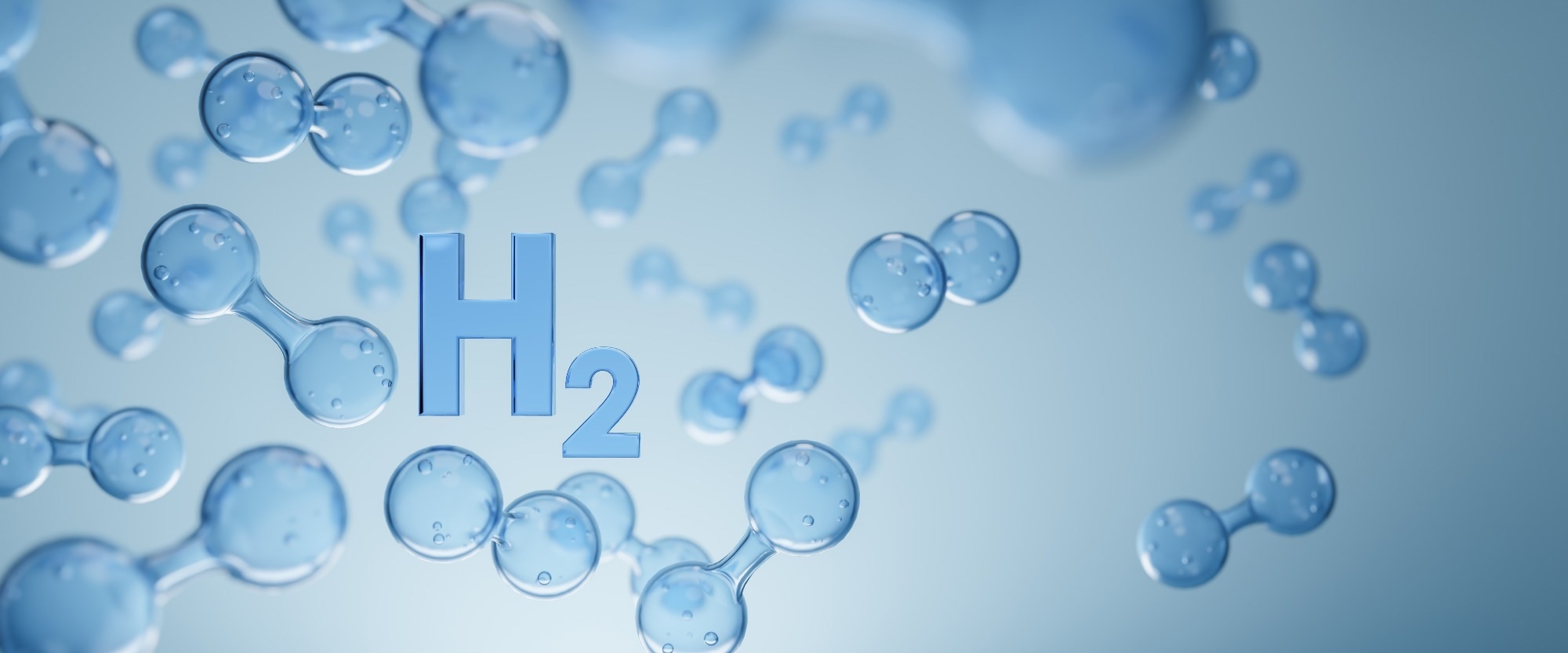A recent study published in Small explores how high-entropy alloys (HEAs), when combined with semiconductor materials like TiO₂, can significantly enhance photocatalytic hydrogen production.
The research focuses on synthesizing Pd-enriched HEA nanocrystals supported on TiO₂, uncovering the mechanisms behind their improved photocatalytic performance, and examining how their multielement composition affects interfacial properties and charge dynamics.

Image Credit: Fit Ztudio/Shutterstock.com
Background
Photocatalytic hydrogen evolution relies heavily on the effective separation and transfer of photogenerated charge carriers (electrons and holes). Noble metals such as platinum are commonly used as co-catalysts, but their high cost and scarcity limit their broader application. Thanks to their tunable electronic and surface properties, HEAs offer a compelling alternative.
Studies have shown that the metallic interactions and atomic arrangements in HEAs can optimize adsorption energies of key intermediates, such as hydrogen (H*) and hydroxyl groups (OH*), following the Sabatier principle, which suggests that an optimal catalyst binds reaction intermediates neither too strongly nor too weakly.
Synthesizing HEA nanocrystals with well-defined facets and compositions also opens the door to creating efficient Schottky junctions with TiO₂. Understanding how these multielement interactions influence electronic structure, surface reactivity, and charge dynamics is vital for designing the next generation of photocatalysts.
The Current Study
The researchers synthesized Pd@HEA core–shell nanocrystals using a heteroepitaxial growth method that enabled precise control over composition and surface facets. A dropwise synthesis technique helped maintain uniform particle size and composition. These nanocrystals were then deposited onto commercially available TiO₂ (Degussa P25) to create hybrid photocatalytic systems.
To probe their structure and function, the researchers used a range of analytical techniques. Ultraviolet photoelectron spectroscopy (UPS) provided insights into work functions and band alignments, helping confirm the presence of Schottky barriers at the metal–semiconductor interface.
Transient absorption spectroscopy (TAS) revealed charge carrier lifetimes and dynamics, showing how different HEA compositions impacted electron and hole behavior. X-ray photoelectron spectroscopy (XPS) offered in situ analysis of surface states, pinpointing active sites, particularly regions enriched with Pt. Density functional theory (DFT) simulations helped interpret these results at the atomic level, shedding light on interactions, adsorption energies, and electronic structure.
Photocatalytic hydrogen production was tested under simulated sunlight using a 300 W Xenon lamp at an intensity of 1000 W/m². The catalysts were suspended in a pH-adjusted aqueous solution, sonicated for even dispersion, and purged with argon to remove oxygen. Hydrogen output was measured using gas chromatography over a four-hour reaction period.
Results and Discussion
The Pd@HEA nanocrystals produced significantly more hydrogen than conventional Pt-based or single-metal systems. UPS measurements revealed a higher work function (~4.81 eV) for the HEA-coated samples, confirming the formation of effective Schottky junctions with TiO₂. These junctions helped promote charge separation and reduce recombination losses.
TAS results backed this up, showing longer carrier lifetimes and fewer shallow traps—signs of more efficient charge extraction. XPS data identified Pt and Ir atoms as primary active sites, aligning with DFT predictions of near-zero free energy changes (ΔG) for hydrogen adsorption at these sites—again, consistent with the Sabatier principle.
The proximity and synergistic interactions among multiple elements, including Pd, Ir, Rh, Ru, and Pt, contributed to the optimized intermediate binding energies, thereby boosting catalytic activity. These interactions also stabilized the atomic arrangement, maintained surface active sites, and enhanced charge transfer efficiency across the interface.
Theoretical simulations demonstrated that the presence of multiple metals modulated the electronic structure, increasing electron density around catalytic sites and fostering a conducive environment for hydrogen adsorption and evolution. Additionally, facet control during synthesis led to exposed crystal planes that favored active site accessibility and charge transfer pathways.
Download your PDF copy now!
Conclusion
This study highlights the potential of multielement high-entropy alloys combined with semiconductors like TiO₂ for efficient photocatalytic hydrogen production.
By engineering Pd-enriched HEA core–shell nanocrystals with tailored compositions and surface structures, the researchers improved charge separation, stabilized catalytic sites, and optimized hydrogen adsorption energetics. The formation of Schottky junctions was key to extending carrier lifetimes and minimizing recombination, leading to enhanced overall performance.
By integrating experimental techniques with theoretical modeling, the study offers a deeper understanding of how multielement synergy and interface design can drive next-level photocatalytic systems.
Journal Reference
Lin J.-T., et al. (2025). Spectroscopic and Theoretical Insights into High-Entropy-Alloy Surfaces and Their Interfaces with Semiconductors for Enhanced Photocatalytic Hydrogen Production. Small, 2503512. DOI: 10.1002/smll.202503512, https://onlinelibrary.wiley.com/doi/10.1002/smll.202503512